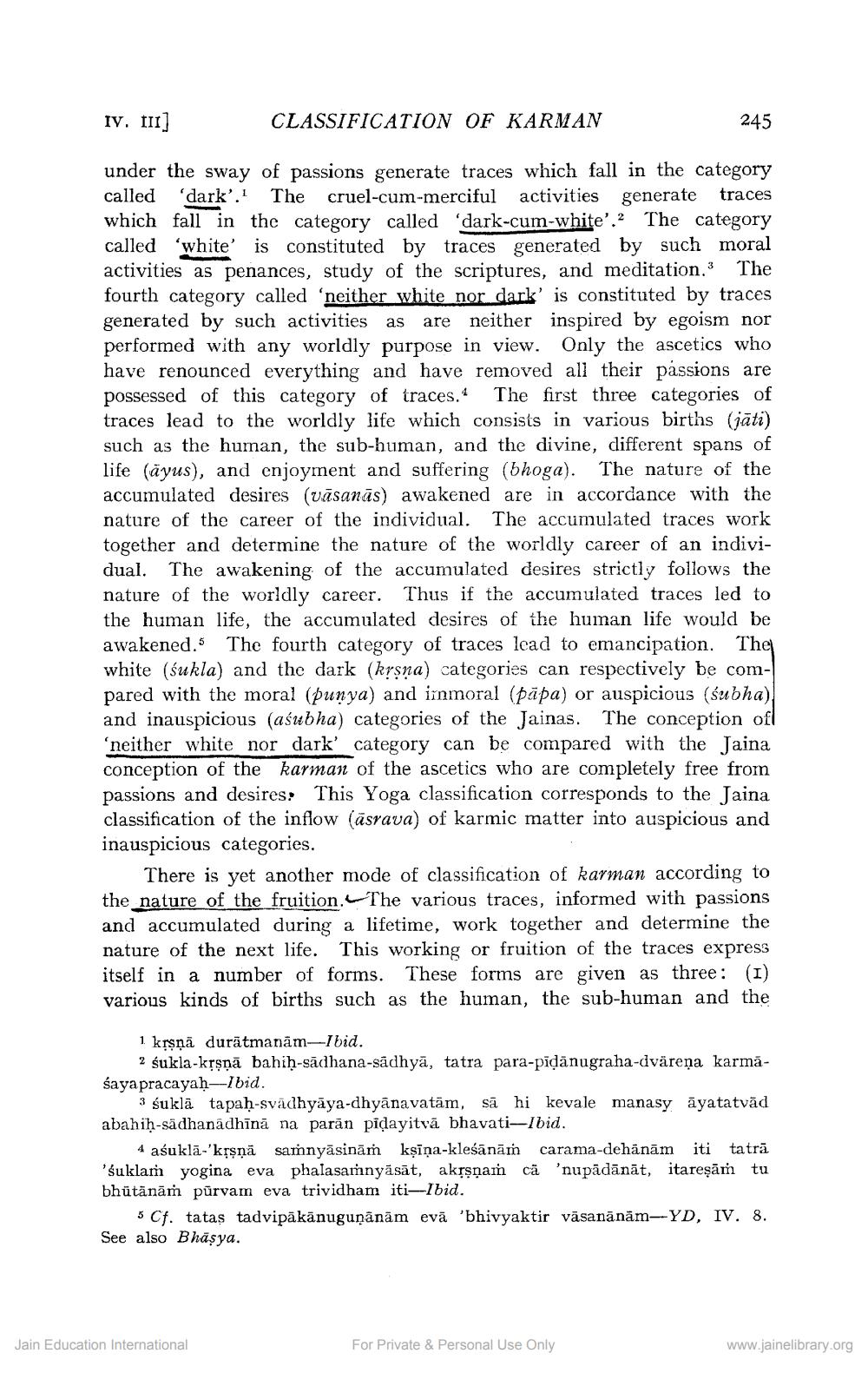________________
IV. III]
CLASSIFICATION OF KARMAN
245
under the sway of passions generate traces which fall in the category called 'dark'.' The cruel-cum-merciful activities generate traces which fall in the category called 'dark-cum-white'. The category called 'white' is constituted by traces generated by such moral activities as penances, study of the scriptures, and meditation. The fourth category called 'neither white nor dark' is constituted by traces generated by such activities as are neither inspired by egoism nor performed with any worldly purpose in view. Only the ascetics who have renounced everything and have removed all their passions are possessed of this category of traces. The first three categories of traces lead to the worldly life which consists in various births (jāti) such as the human, the sub-human, and the divine, different spans of life (äyus), and enjoyment and suffering (bhoga). The nature of the accumulated desires (vāsanās) awakened are in accordance with the nature of the career of the individual. The accumulated traces work together and determine the nature of the worldly career of an individual. The awakening of the accumulated desires strictly follows the nature of the worldly career. Thus if the accumulated traces led to the human life, the accumulated desires of the human life would be awakened." The fourth category of traces lead to emancipation. The white (śukla) and the dark (krsna) categories can respectively be compared with the moral (punya) and irnmoral (papa) or auspicious (subha) and inauspicious (aśubha) categories of the Jainas. The conception ofl 'neither white nor dark' category can be compared with the Jaina conception of the karman of the ascetics who are completely free from passions and desires: This Yoga classification corresponds to the Jaina classification of the inflow (āsrava) of karmic matter into auspicious and inauspicious categories.
There is yet another mode of classification of karman according to the nature of the fruition. The various traces, informed with passions and accumulated during a lifetime, work together and determine the nature of the next life. This working or fruition of the traces express itself in a number of forms. These forms are given as three: (I) various kinds of births such as the human, the sub-human and the
1. krsņā durātmanām-Ibid.
2 sukla-krsnā bahih-sādhana-sādhyā, tatra para-pidānugraha-dväreņa karmāsaya pracayah-Ibid.
3 suklā tapah-svadhyāya-dhyānavatām, sã hi kevale manasyāyatatvād abahih-sadhanadhīnā na parān pidayitvā bhavati--Ibid.
4 aśuklā-'krsnā samnyāsināṁ kşiņa-kleśānām carama-dehānām iti tatrā suklam yogina eva phalasamnyāsāt, akrsnam cä 'nupādānāt, itareşām tu bhütänām pūrvam eva trividham iti-Ibid.
5 Cf. tatas tadvipākānuguņānām evã 'bhivyaktir vāsanānām-YD, IV. 8. See also Bhāsya.
Jain Education International
For Private & Personal Use Only
www.jainelibrary.org




